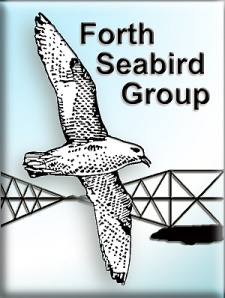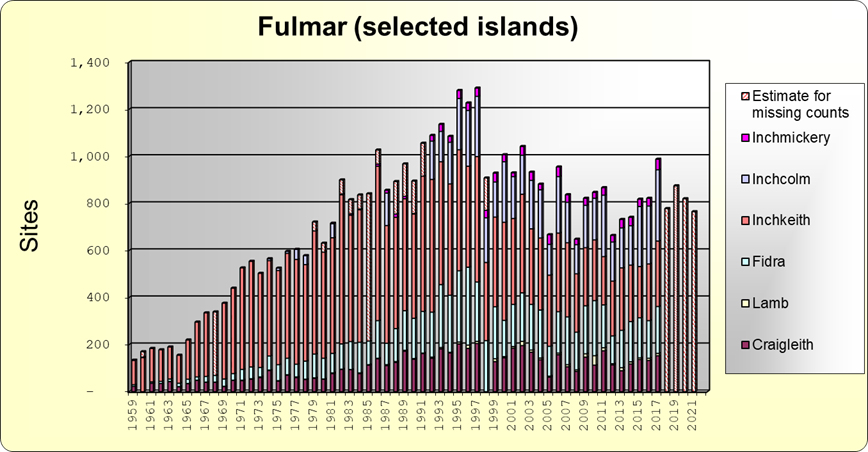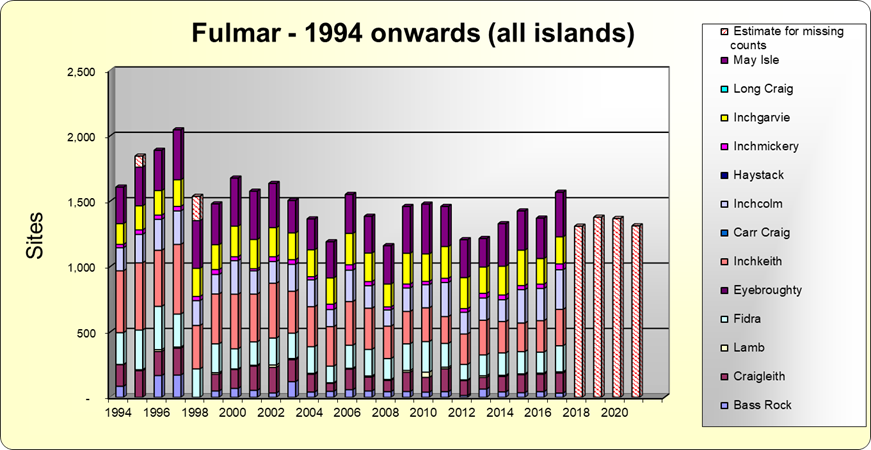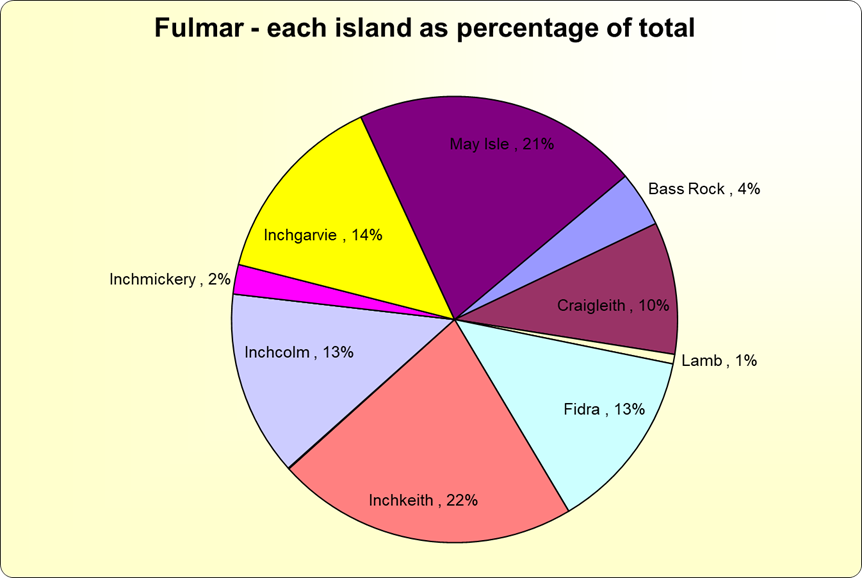

Fulmar do not have a nest as such, they just lay their egg in a shallow scrape. Therefore it is the number of apparently occupied sites that is counted. A site is counted as occupied only when a bird appears to be sitting tightly on a reasonably horizontal area judged large enough to hold an egg.
Note: To try and make the charts more meaningful, where the counts are incomplete an estimate has been made for the missing figures. The counts for the years on either side of the missing count are compared, and the lower value is taken as the estimate.
1: Click here for table of fulmar counts
Here you will find the figures for all the counts since they started in 1959.
2: Charts for number of sites, selected islands
These charts show the number of sites counted each year since 1959. As figures are not available for
all islands, these charts only show the counts for Craigleith, Fidra, Lamb, Inchcolm, Inchmickery and Inchkeith.


3: Charts for number of sites counted on ALL islands, 1994 onwards
These charts show the number of sites counted each year since 1994. These are the years where
figures are available for all islands.


4: Pie chart showing the split of breeding fulmar over the different islands.
The chart uses the average number of sites counted on each island since 1994. (This does
not include any estimate for missed counts.)
